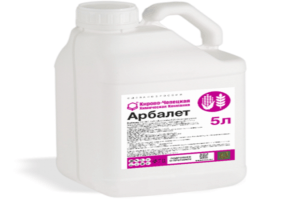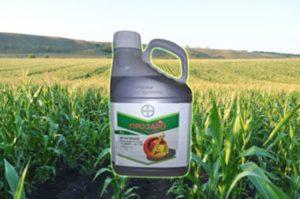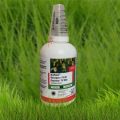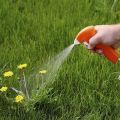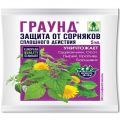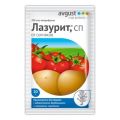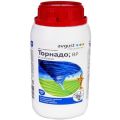Instructions for the use of Miura herbicide against weeds in the beds and the consumption rate
Herbicide Miura is a selective drug that is used to destroy annual and perennial weeds in plantings. The agent is quickly absorbed by the leaves of harmful plants, which leads to their inevitable death. To understand the effectiveness of the drug, you need to know the features of the instructions for using the Miura herbicide, its composition, mechanism of action, as well as toxicity and safety measures when working with the product.
Content
- 1 Composition and release form of herbicide Miura
- 2 Positive and negative sides
- 3 The mechanism of action of the drug
- 4 Preparation of working solution
- 5 Calculation of consumption for different crops
- 6 Instructions for the use of herbicide against weeds
- 7 Safety engineering
- 8 Toxicity
- 9 Compatibility with other herbicides
- 10 Storage of funds
- 11 Shelf life
- 12 Analogs
Composition and release form of herbicide Miura
The main active ingredient of the agent is quizalofop-P-ethyl. The form of the preparation is an emulsion concentrate. It is sold in cans that have a volume of 5 liters.
Positive and negative sides
The drug is capable of killing weeds at all stages of development. For this reason, 1 treatment is sufficient. In addition, the herbicide practically does not accumulate in the soil, decomposing into components that do not pose a threat to the environment.
Among the disadvantages of the drug, it is worth highlighting its effectiveness only against cereal weeds. However, he is not able to harm dicotyledonous weeds. Miura belongs to the 3rd hazard class, which requires compliance with safety measures while working with the substance.
The mechanism of action of the drug
The main active ingredient of the herbicide has a depressing effect on weeds. It is easily absorbed by cereal pests, including bluegrass, wheatgrass, bent grass, reeds, foxtail, bristle grass, wild oats, and then quickly spreads through the stem and affects the root system.
Over time, harmful plants begin to turn yellow and dry out, and 3 weeks after treatment, they completely die.
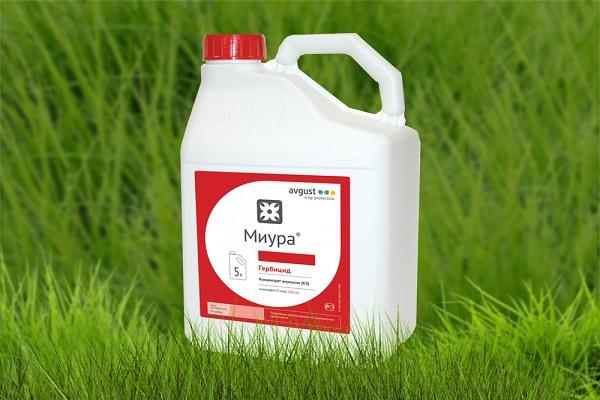
Preparation of working solution
Before mixing the herbicide, shake the herbicide in the original container several times. The capacity of the sprayer is filled by a third with water and the mixer is turned on. Then add the calculated dose of the drug and continue to fill the tank with water while stirring. This continues until the mixture is homogeneous and the tank is completely full.
Calculation of consumption for different crops
The product is produced in special four-layer canisters with a volume of 5 liters. On average, the consumption rate of the drug for annual weeds is 600 milliliters per hectare.For the destruction of perennial weeds, 1 liter of the product is used for 200-300 liters of water.
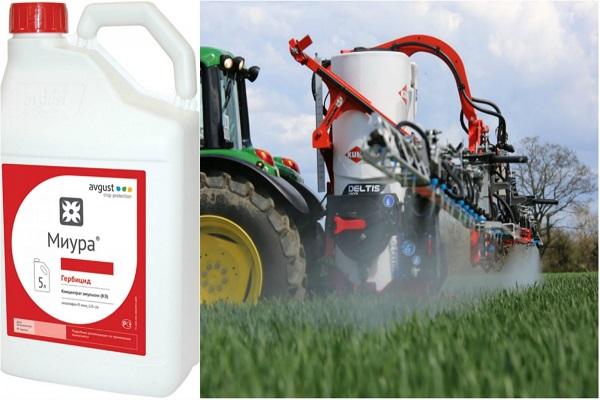
Instructions for the use of herbicide against weeds
The opening of the package of the product is carried out away from food, children, pregnant and lactating women, as well as people who have an individual intolerance to the components of the drug. Mixing of the working solution is carried out on the day of processing. During this you need to use protective equipment, including a respirator and goggles.
The resulting solution is sprayed on the ground part of the weeds in the beds. It is necessary to try to prevent the substance from getting on the leaves of plant crops.
In the case of the Miura herbicide, 1 treatment is sufficient, since quizalofop-P-ethyl is able to destroy weeds at the development stage.
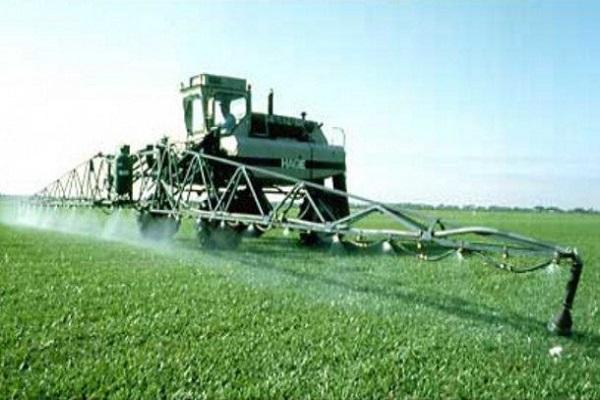
Safety engineering
During the treatment of plants, it is recommended to adhere to certain safety rules, thanks to which it is possible to avoid intoxication of the body with the Miura herbicide. These include:
- Using a change of clothing that is made of thick fabric. In addition, you need to have vacuum glasses, a hat, a respirator, rubber gloves and high shoes.
- Processing should be carried out in the morning or evening, when the air is cool outside. Spraying is not recommended during gusty wind or rain.
- When spraying fruit plants, do not eat, smoke or drink. This will prevent the drug from entering the digestive system and upper respiratory tract.
- Young children, pregnant and lactating women must not be near the person who is carrying out the treatment. Also, it is not recommended to do this for people who are allergic to the components of the herbicide.
- After the procedure, the spray tank must be thoroughly washed. For this, a 5% soda solution or laundry soap is used. The clothes in which the treatment of the site was carried out must be washed several times.

Toxicity
Miura belongs to the 3rd group of toxicity. It is moderately hazardous to human health, honey insects and the environment.
Compatibility with other herbicides
The herbicide is often used in combination with other drugs in the fight against dicotyledonous weeds:
- Triceps, Biceps 22, Hacker, Pilot are used on beets;
- when processing a site with flax crops, Magnum, Herbitox, Herbitox-L are used;
- for the destruction of weeds on soybean plantings, the Miura herbicide is effective in combination with the Korsa and Fabian preparations.
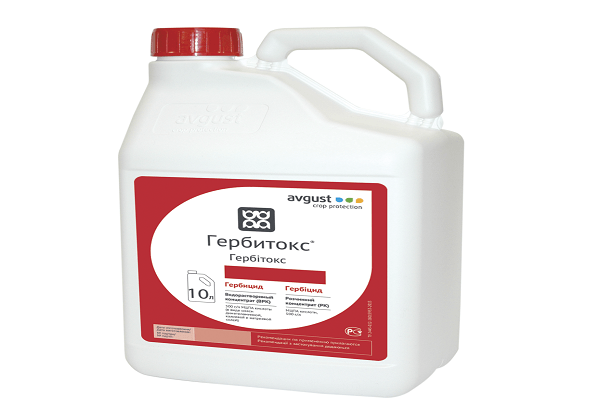
Storage of funds
The container with the herbicide should be stored in a cool place out of the reach of sunlight. In addition, the drug should not be near food or household items in the living area.
Shelf life
Subject to all storage conditions of the product, the shelf life of the herbicide is 2 years from the date of manufacture. After the expiration of this time, the contents of the container are checked for compliance with the technical parameters and, if there are compliance, are used for their intended purpose.
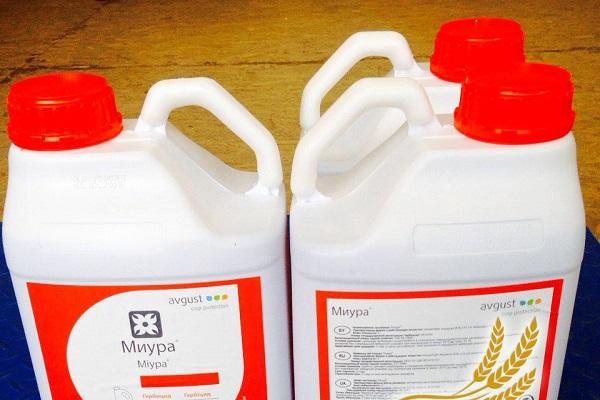
Analogs
Alternative drugs that have a similar composition and method of application are the herbicides Forward, Target and Hunter. In addition, Triceps, Hacker, Magnum, Pilot and Fabian products give a favorable result when processing plantings.
Miura herbicide is one of the most effective selective preparations for the destruction of annual weeds and perennial weeds. Thanks to him, you can ensure the normal growth and development of garden crops. Subject to the instructions for use of the drug, the substance is not dangerous for people, honey insects and the environment, and also allows you to quickly remove harmful plants from the site.
